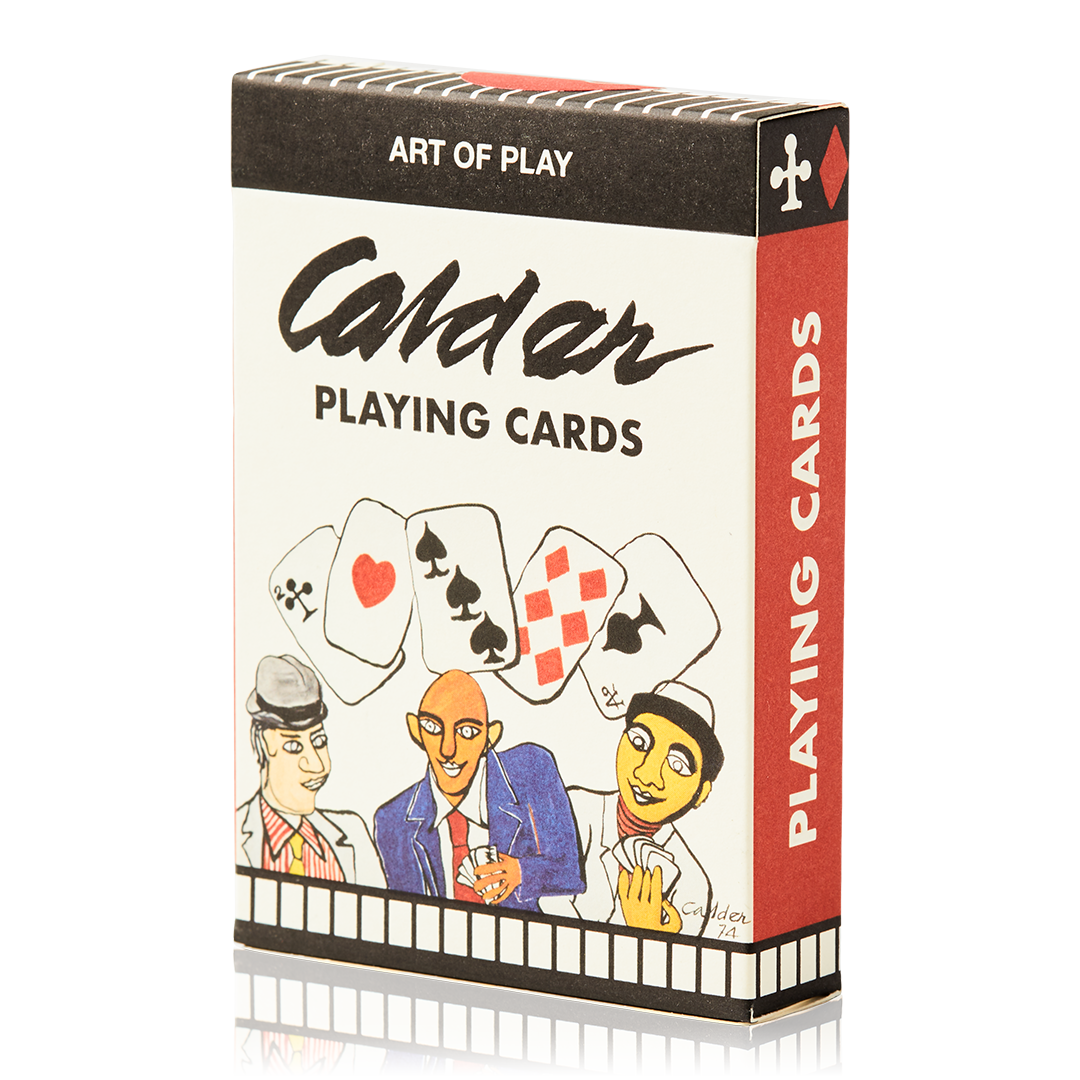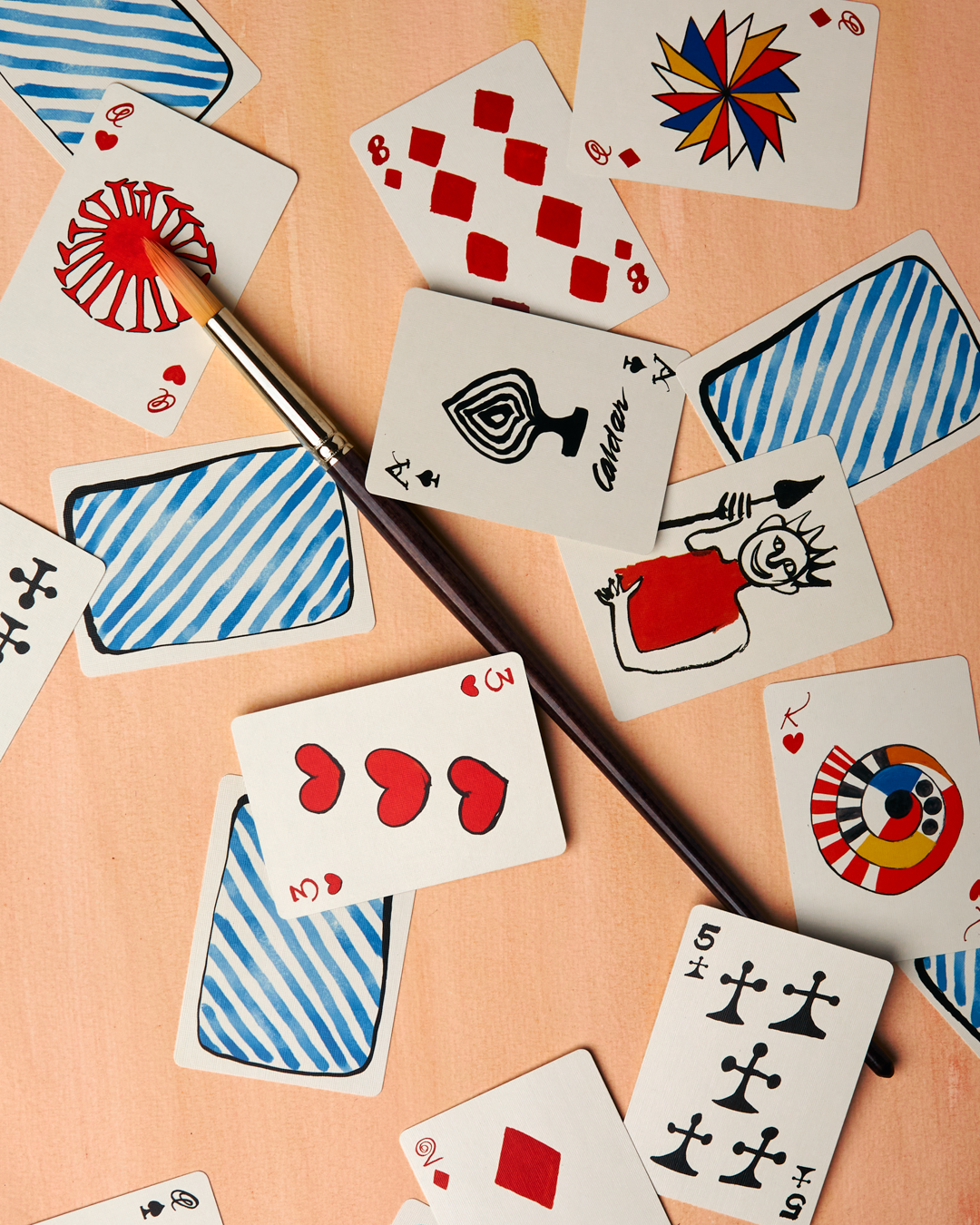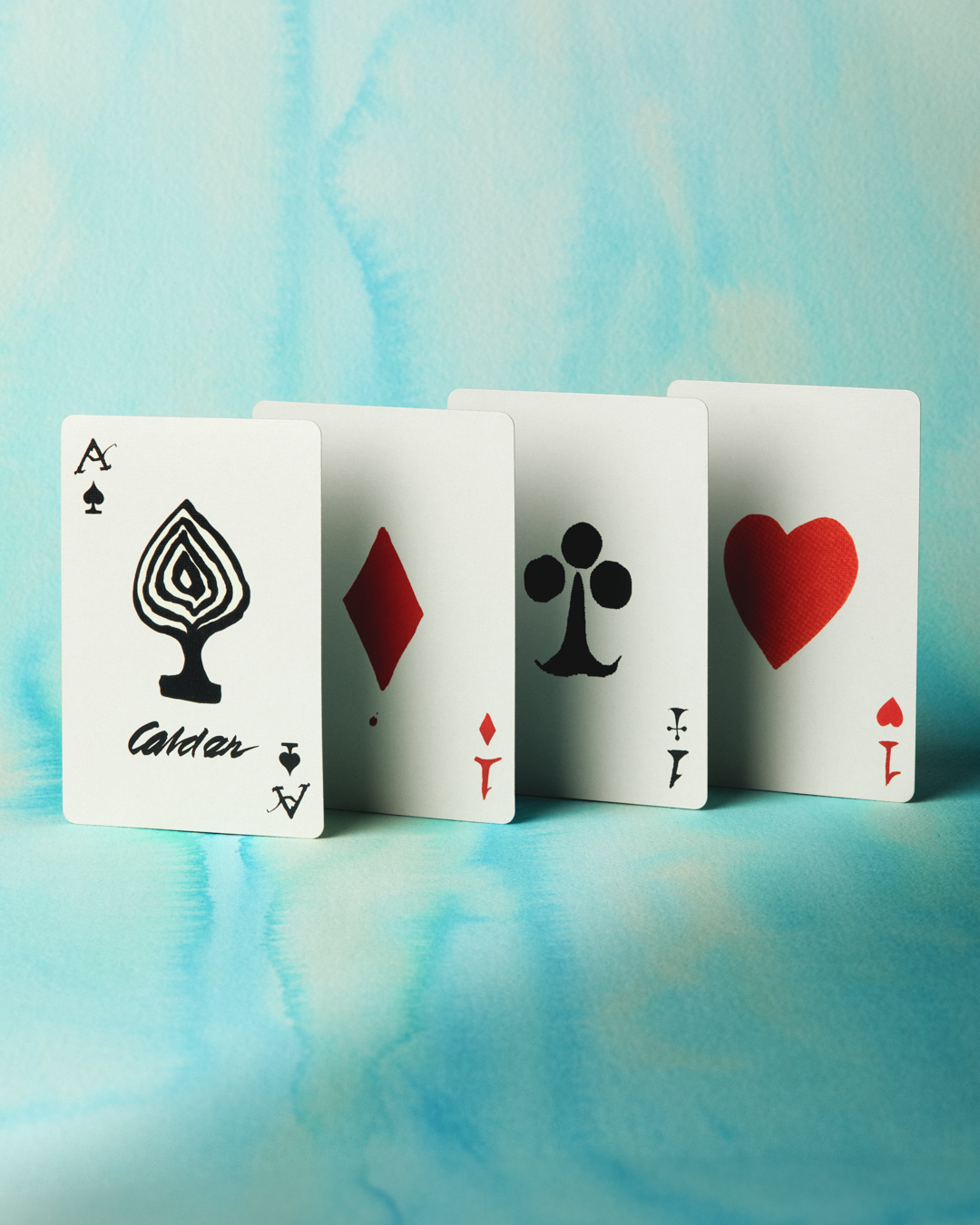



Calder Playing Cards
Join our Curiosity Club for a welcoming surprise.

Learn More
Calder Playing Cards
One of the most influential artists of the twentieth century, Alexander Calder (1898–1976) disrupted traditional boundaries in art with his suspended abstract mobiles and his monumental stabiles. Removing sculpture from the pedestal, he invited viewers to experience his art directly, a concept that extends to his performative pieces, furniture design, jewelry, and even his paintings.
Calder Playing Cards are based on a set of vivid gouache paintings from the 1970s known as the Card Player series. Many of the cards are direct reproductions from those paintings, with the striped back also pulled from them. All letters and numbers are in Calder’s own handwriting.
Since court cards were not included in the original images, the faces for the Jack, King, and Queen were extracted from another series of gouaches that Calder painted around the same period.
Every detail of this deck was faithfully reproduced to celebrate the enduring legacy of Calder, the iconic master of innovation in art.
Alexander Calder, Art of Play
Art of Play
FSC Certified Paper
United States




